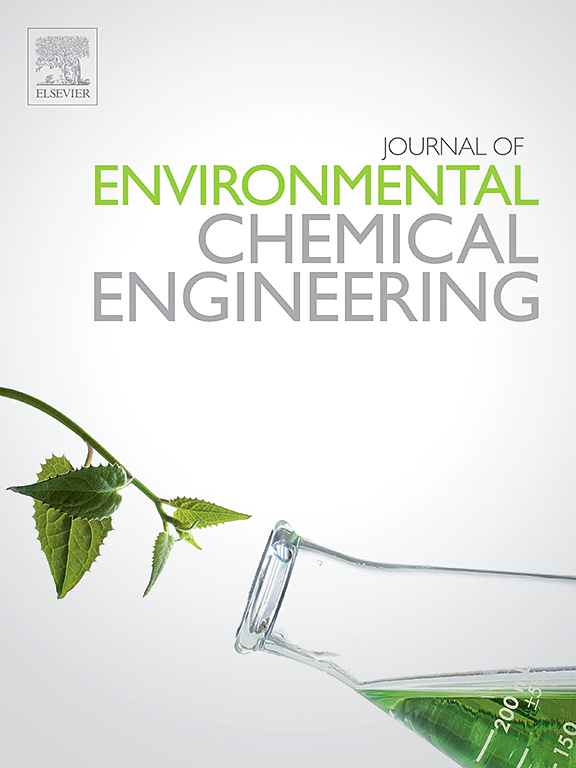铀分离用磁性吸附剂:进展、机理和工业应用
IF 7.2
2区 工程技术
Q1 ENGINEERING, CHEMICAL
引用次数: 0
摘要
本文综述了磁性固相吸附剂在海水中铀分离中的应用范围。msps -利用顺磁芯作为铀选择性吸附剂的一部分-使吸附剂与水相的物理分离更快,使它们成为促进铀分离的理想选择,而无需大规模的分离柱。适合批量操作和更高的表面积体积比是MSPS的其他吸引力。自20世纪70年代以来,从海水中分离铀一直是一个关键的研究领域,尽管在这方面的工作有限。然而,随着全球对铀的需求不断增长,以满足未来能源需求,因为需要减少碳排放,从化石燃料转向。本文综述了国内外不同类型的铀分离用磁性吸附剂的研究进展,包括合成方法、表征方法、相互作用机理、铀分离效率等。由于关于这一主题的文献有限,以及为基于磁固相分离的大规模分离系统,特别是从海水中去除铀提供有价值的见解的前景,本综述确定了进一步探索的重要机会。这一审查将更多地强调磁辅助铀分离材料的不同研究进展,目前的重点是强调具有工业范围的材料、对材料的理论研究和对使用磁性吸附剂可行性的工业尝试。本文章由计算机程序翻译,如有差异,请以英文原文为准。
Magnetic supported adsorbents for uranium separation: Advances, mechanisms, and industrial applications
This review emphasizes on identifying the scope of Magnetic solid-phase adsorbents (MSPS) for the separation of uranium from seawater. MSPS—utilizing the paramagnetic core as part of the uranium-selective adsorbent—enables a faster physical separation of the adsorbent from the aqueous phase, making them an ideal option for facilitating the uranium separation in batch mode without the need of large-scale separation columns. Suitability for batch-mode operation and a higher surface area-to-volume ratio are the other attractions of MSPS. Uranium separation from seawater has been a critical research area since the 1970s, although there has been limited work on the subject. However, with the growing global demand for uranium to meet future energy needs because of demand to reduce carbon emissions by shifting away from fossil fuels. This review highlights an update deliberation on scientific developments across the globe in developing a diverse class of magnetic supported adsorbents for uranium separation, the synthetic procedure, characterization methods, mechanism of interaction, uranium separation efficiency and so on. Due to the limited literature on this topic and the prospective to provide valuable insights into large-scale separation systems based on magnetic solid phase separation, particularly for uranium removal from seawater, the present review identifies significant opportunities for further exploration. This review would stress upon more on the different research development towards materials for magnetic assisted separation of uranium, with current focus towards emphasing materials having industrial scope, theoretical studies towards materials and industrial attempts towards the viability of using magnetic adsorbents.
求助全文
通过发布文献求助,成功后即可免费获取论文全文。
去求助
来源期刊

Journal of Environmental Chemical Engineering
Environmental Science-Pollution
CiteScore
11.40
自引率
6.50%
发文量
2017
审稿时长
27 days
期刊介绍:
The Journal of Environmental Chemical Engineering (JECE) serves as a platform for the dissemination of original and innovative research focusing on the advancement of environmentally-friendly, sustainable technologies. JECE emphasizes the transition towards a carbon-neutral circular economy and a self-sufficient bio-based economy. Topics covered include soil, water, wastewater, and air decontamination; pollution monitoring, prevention, and control; advanced analytics, sensors, impact and risk assessment methodologies in environmental chemical engineering; resource recovery (water, nutrients, materials, energy); industrial ecology; valorization of waste streams; waste management (including e-waste); climate-water-energy-food nexus; novel materials for environmental, chemical, and energy applications; sustainability and environmental safety; water digitalization, water data science, and machine learning; process integration and intensification; recent developments in green chemistry for synthesis, catalysis, and energy; and original research on contaminants of emerging concern, persistent chemicals, and priority substances, including microplastics, nanoplastics, nanomaterials, micropollutants, antimicrobial resistance genes, and emerging pathogens (viruses, bacteria, parasites) of environmental significance.
 求助内容:
求助内容: 应助结果提醒方式:
应助结果提醒方式:


